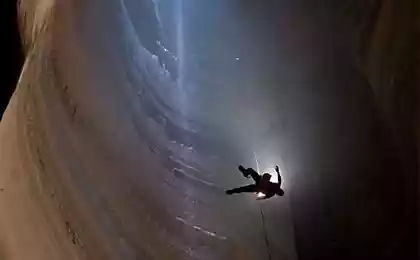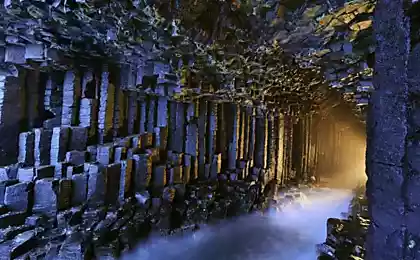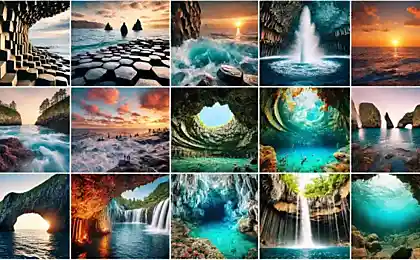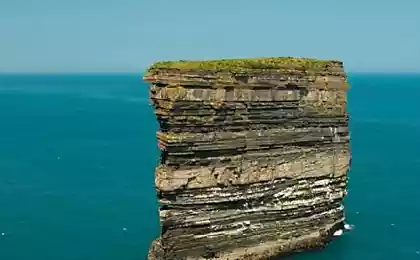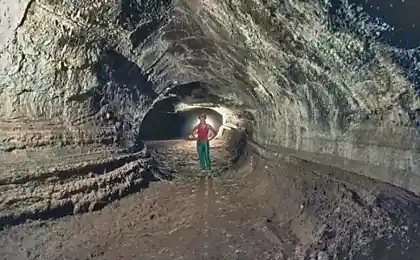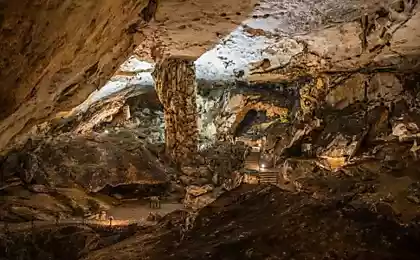630
The amazing rock city of the world
How to live in the rock homes and where to go to feel like a caveman. We have collected the most impressive cave cities in the world – from Georgia and Turkey to China and the United States.
Petra, Jordan
The rock city of Petra remembers the days before our era and sees the world from the height of his age and 900 meters above the sea. It was filmed a movie about Indiana Jones and the second "Transformers". In the Lovecraftian "the mountains of madness" expedition in the Antarctic find a mysterious monument that looks like a Snake tomb in the valley of Petra.
And the Agatha Christie novel "appointment with death" compares the color of the rocks of this ancient Jordanian city with crimson roses, with the raw meat. Don't know what will remind you of Peter, but to see one of the seven new wonders of the world is necessary.
Mesa Verde, Colorado, USA
The first people on the wooded plateau of the Mesa Verde settled in the VI century. At first they lived in mud huts, gathering nuts and hunting deer. But it cost them to build rock city and learn to grow corn as the drought began -- had to move. So "the green plateau" remained uninhabited for 600 years. In the Park today, Mesa Verde offers six hundred ancient settlements, including a giant Rock Palace and the House of fir trees, with 120 rooms.
To the most inaccessible room House with a balcony – it is necessary under the supervision of a Ranger to climb a 10-meter ladder to get through the narrow tunnel and climb the stairs carved into the rock. But the experience is worth it: stone cliff above the caves of sooty smoke, which last time was from the centers of 7 centuries ago. It is not surprising to see Mesa Verde arrives each year in 10 times more people than lived here for 700 years.
Vardzia, Georgia
Amazing cave city of Vardzia in 100 km from Borjomi reminds us of the Golden age of Georgian history, when the country was ruled by Queen Tamara. At the behest of her father, king George III, in-the-wall tuff of Bear mountain from the Kura river carved underground monastery.
Little girl the Queen was playing with his uncle in the caves of the unfinished monastery, lost and cried, "I'm here, uncle!" (load. "აქ ვარ, ძია", "AK var, dzia!") -- thus, the name. Later Vardzia was enriched with new chapels, churches, baths, a traitname and libraries that go down the cliff at 50 meters and rise to a height vosmietazhki.
If the time to drive to Vardzia no escape to other cave city Georgia-Uplistsikhe. This is a half-hour drive from Tbilisi.
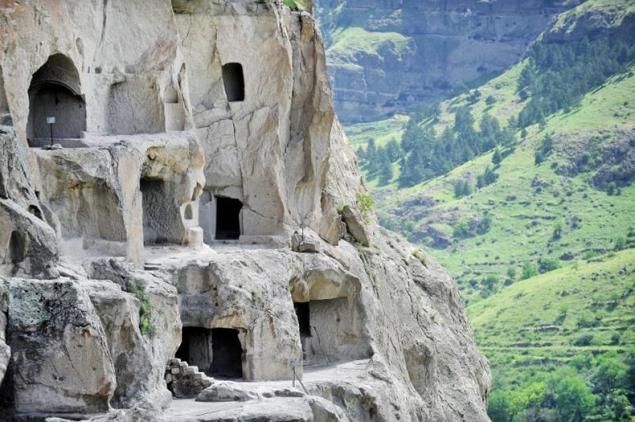

Cappadocia, Turkey
Among these bizarre rocks of pink and white tuff people settled in the bronze age. The word "Cappadocia" ("country of beautiful horses") comes from the Hittites -- they lived here in the XVIII–XII centuries BC, not yet lost to the "sea peoples", who began to settle in the Armenian highlands. Then Cappadocia was conquered by the Persians, and fifteen hundred local thoroughbred horses entered the invincible cavalry of Darius I and his son Xerxes.
The Persians defeated Alexander the great, and after the collapse of his Empire, Cappadocia became a Roman province. If ten-the rock fortress of Ortahisar could speak, we would learn a lot of interesting stories from the life of the ancient Romans. In the first century under the authority of St. Basil the Great, Christians built underground cities to protect from the raids of the Saracens. The construction of cave labyrinths hand of the Byzantines and the Seljuks, and the fortress of Uchisar lived the Ottomans – who not only saw these places! And here you come.
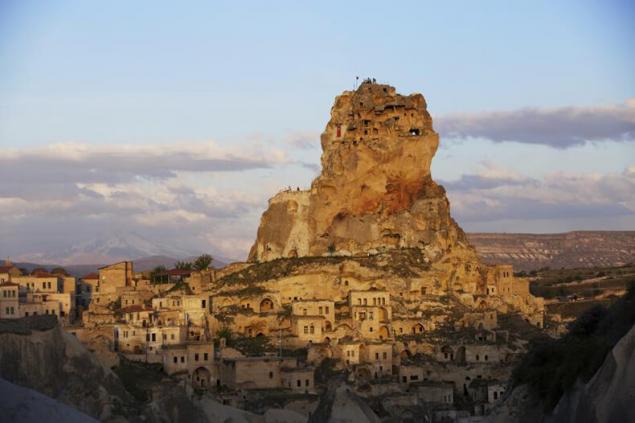
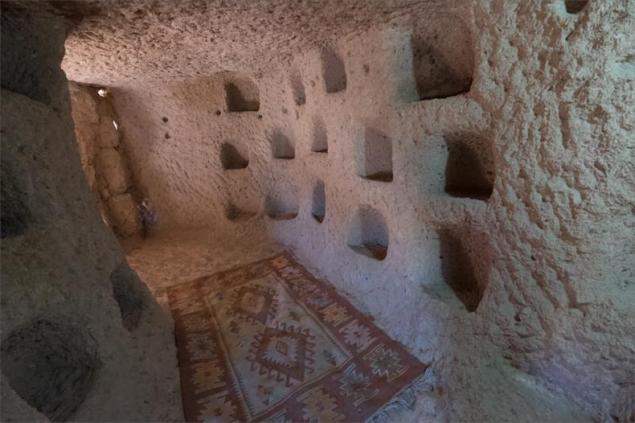
The Sassi di Matera, Basilicata, Italy
The cave houses of the town of Matera in southern Italy, carved in the rock by different civilizations in different ages, and emptied only after the Second world war when he published a book of Carlo Levi's "Christ stopped at Eboli". The author drew terrible pictures of the poverty and unsanitary conditions in the then Matera.
"It was a cave dug into the hard clay surface of the ravine; some of them had some kind of facade, some decorated with a modest ornament of the eighteenth century, was even beautiful. [...] The air and light penetrated into the cave through the door. In some was not and the door-got there on top of the ladders, and stairways. In these black holes, with earthen walls, were visible in the bed, miserable blankets scattered rags. On the floor lay dogs, sheep, goats, pigs. All families lived in such caves, and slept there all along: men, women, children, and animals".
"Problem mother" instantly grew to the scale of the "shame of the nation". In 1952, the authorities moved more than 15 thousand cave residents in new neighborhoods. Many people do not want to move, then the government walled up the entrances to the caves with cement. After 40 years, the districts of Sasso Caveoso, and Sasso Barisano and Civico, in which are preserved old houses, caves, included in the world heritage List of UNESCO. Now they admire the travelers and eminent filmmakers shoot movies here. For example, Mel Gibson chose the Sassi di Matera to film the crucifixion of Jesus in "the Passion of the Christ".
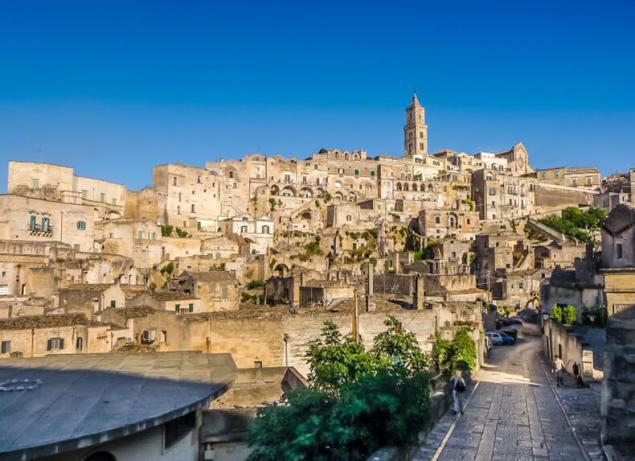
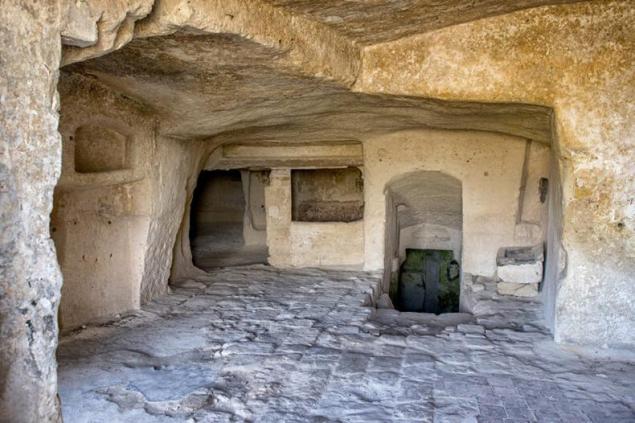
Rocamadour and Lures-Rosmarie, France
Three storey "vertical village" of Rocamadour in the South of France reflect the position of the medieval social classes -- knights lived in the "penthouse," the clergy-the "second floor", and ordinary laborers -- down near the river. On top of the cliff stands the castle, accessed by a staircase with 14 stairs. They symbolize standing Jesus on the way to the crucifixion and is marked by the shrines, where pilgrims pray. From rock castle, you will enjoy divine views of the river valley, Alza.
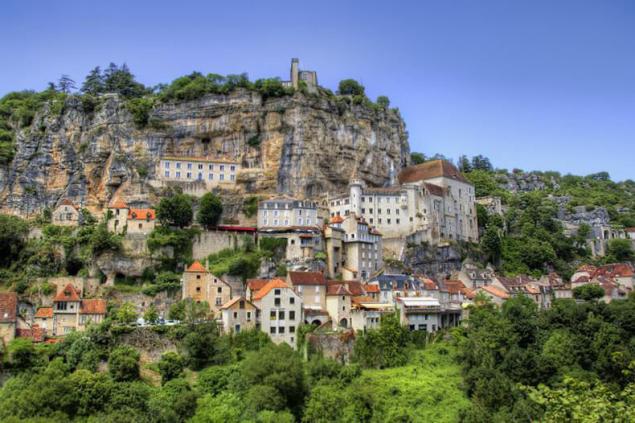
In the West of France, in pays de La Loire, you will find another treasure – the village of troglodytes Lures-Rosmarie. The settlement of 250 caves, built of Shelly limestone, and 40 farms arose in the XIII century. Today, it is curious to look into the grottoes, with tiled roofs which keep the memories of their inhabitants, walking on two farms and down to the wine cellar.
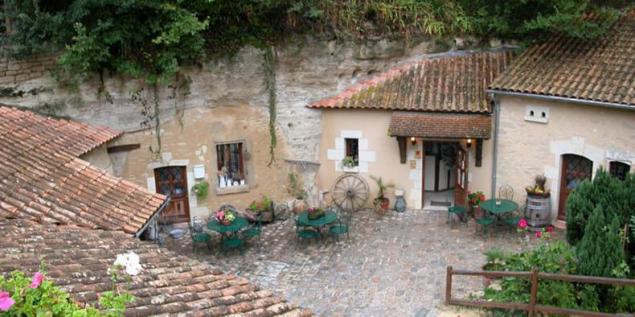
Photo: Pymouss, CC BY-SA 3.0
Rock city Andalusia, Spain
The first people settled at the place of Guadix back in the Paleolithic. When Caesar here silver was mined by the Romans, and the name of the Guadix-Haix ("river of life") this place gave the Moors. Under their rule the city flourished and even started to argue with the Granada for the title of the commercial and cultural center.
In the XV century the Christians sought to free the Guadix from the Moors, and so had to hide in the cave mines. Here in these parts, and the fashion to live by-hobbycity. Local still insist that the caves great living-not a stuffy day, night, heat. And the question of the expansion of housing is solved at the time: become intimately -- carved in the rock to another room.

Photo: Jose Gonzalvo Vivas, CC BY-NC-ND 2.0
On whitewashed Andalusian houses at the height of 723 meters above the sea you can admire the town of Ronda. It is in the province of Malaga, 50 km North of Costa del Sol. Half an hour's drive from Ronda lies the picturesque mountain village of Sacromonte, and in two hours -- mountain village of Setenil de Las Bodegas. The local house is literally sandwiched in the rocks -- score memory card with impressive photographs of the eyeballs.
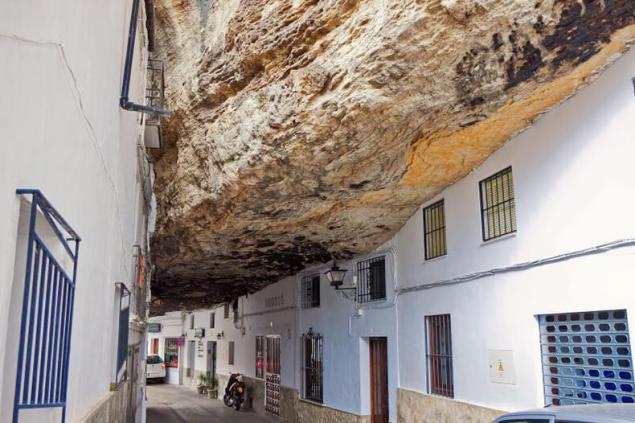
Hasankeyf, Turkey - Hasankeyf like the scenery of a computer game. In the midst of the biblical Tigris river towering pillars of the ancient bridge -- and the imagination immediately draws the edifice, where the modern bridge is clearly losing. Steep rock on the shore is dotted with a maze of a fortress, which once protected the crossing, and primitive houses. In these caves over the Tiger people of the Neolithic were domesticated wild pigs, and in the river valley next began to grow wheat. In many caves preserved ancient utensils, and some still live the Kurds – good climate allows.

Kandovan, Iran
In the Iranian village of Kandovan stone is not something that home -- even running water carved into the rock. Some of the cave "flats" have already celebrated the 700th anniversary while here and live today the Iranians. The name of the town translates as "beehive" and the Kandovan really looks like an abandoned bee hostel. But on the site it is easy to see that life in this village is in full swing, and the locals know what electricity is, and even heard something about the Internet.

Photo: petalouda62, CC BY-NC-ND 2.0
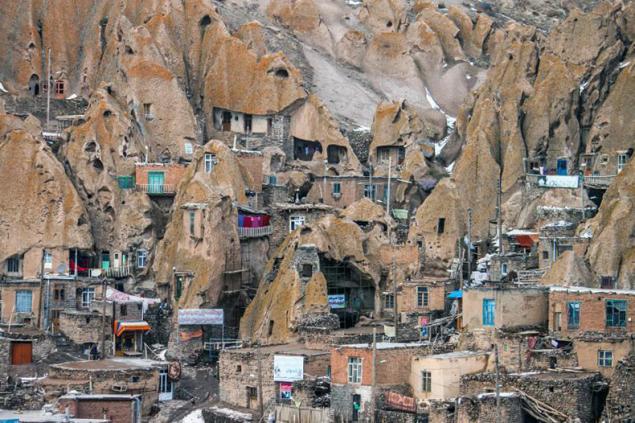
Matmata, Tunisia
Fancy dugouts in the South of Tunisia appeared in the era of the Roman Empire — first they were saved from the Egyptian invaders, and then from the vagaries of the desert climate. Now these underground caves Berbers every year guests from different countries.
Many go here to have a look at the house of Luke Skywalker: a local hotel Sidi Driss brilliantly played the role of Jedi monastery on Tatooine in "Star wars" in 1977. Since then, the room Luke Federovich already converted into a restaurant. published
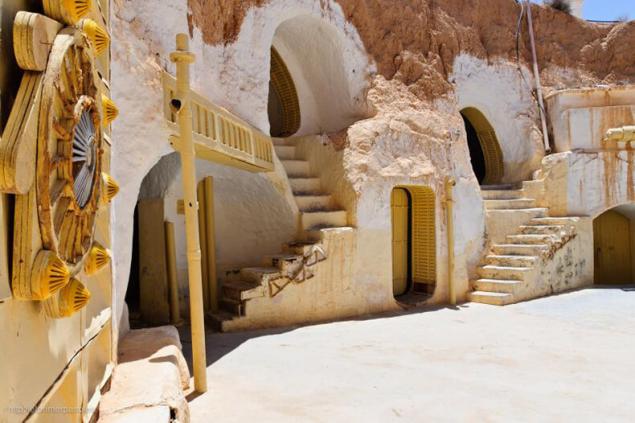
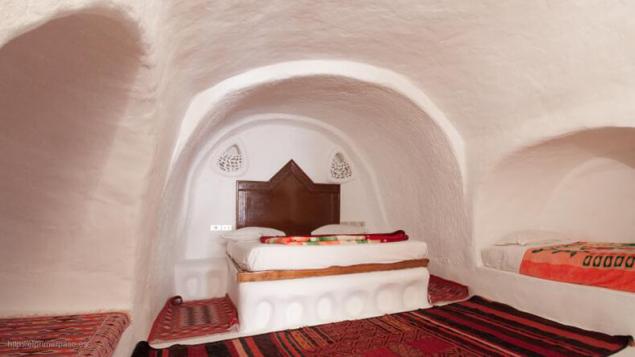
Both photos: El Primer Paso Blog, CC BY-NC-ND 2.0
60 facts that is useful to know everyone
16 places where autumn is especially beautiful
Source: www.skyscanner.ru/news/udivitelnye-peshchernye-i-skalnye-goroda-mira#at_pco=smlrebv-1.0&at_si=57e9265cc0189f6e&at_ab=per-2&at_pos=0&at_tot=8
Petra, Jordan
The rock city of Petra remembers the days before our era and sees the world from the height of his age and 900 meters above the sea. It was filmed a movie about Indiana Jones and the second "Transformers". In the Lovecraftian "the mountains of madness" expedition in the Antarctic find a mysterious monument that looks like a Snake tomb in the valley of Petra.
And the Agatha Christie novel "appointment with death" compares the color of the rocks of this ancient Jordanian city with crimson roses, with the raw meat. Don't know what will remind you of Peter, but to see one of the seven new wonders of the world is necessary.
Mesa Verde, Colorado, USA
The first people on the wooded plateau of the Mesa Verde settled in the VI century. At first they lived in mud huts, gathering nuts and hunting deer. But it cost them to build rock city and learn to grow corn as the drought began -- had to move. So "the green plateau" remained uninhabited for 600 years. In the Park today, Mesa Verde offers six hundred ancient settlements, including a giant Rock Palace and the House of fir trees, with 120 rooms.
To the most inaccessible room House with a balcony – it is necessary under the supervision of a Ranger to climb a 10-meter ladder to get through the narrow tunnel and climb the stairs carved into the rock. But the experience is worth it: stone cliff above the caves of sooty smoke, which last time was from the centers of 7 centuries ago. It is not surprising to see Mesa Verde arrives each year in 10 times more people than lived here for 700 years.
Vardzia, Georgia
Amazing cave city of Vardzia in 100 km from Borjomi reminds us of the Golden age of Georgian history, when the country was ruled by Queen Tamara. At the behest of her father, king George III, in-the-wall tuff of Bear mountain from the Kura river carved underground monastery.
Little girl the Queen was playing with his uncle in the caves of the unfinished monastery, lost and cried, "I'm here, uncle!" (load. "აქ ვარ, ძია", "AK var, dzia!") -- thus, the name. Later Vardzia was enriched with new chapels, churches, baths, a traitname and libraries that go down the cliff at 50 meters and rise to a height vosmietazhki.
If the time to drive to Vardzia no escape to other cave city Georgia-Uplistsikhe. This is a half-hour drive from Tbilisi.


Cappadocia, Turkey
Among these bizarre rocks of pink and white tuff people settled in the bronze age. The word "Cappadocia" ("country of beautiful horses") comes from the Hittites -- they lived here in the XVIII–XII centuries BC, not yet lost to the "sea peoples", who began to settle in the Armenian highlands. Then Cappadocia was conquered by the Persians, and fifteen hundred local thoroughbred horses entered the invincible cavalry of Darius I and his son Xerxes.
The Persians defeated Alexander the great, and after the collapse of his Empire, Cappadocia became a Roman province. If ten-the rock fortress of Ortahisar could speak, we would learn a lot of interesting stories from the life of the ancient Romans. In the first century under the authority of St. Basil the Great, Christians built underground cities to protect from the raids of the Saracens. The construction of cave labyrinths hand of the Byzantines and the Seljuks, and the fortress of Uchisar lived the Ottomans – who not only saw these places! And here you come.


The Sassi di Matera, Basilicata, Italy
The cave houses of the town of Matera in southern Italy, carved in the rock by different civilizations in different ages, and emptied only after the Second world war when he published a book of Carlo Levi's "Christ stopped at Eboli". The author drew terrible pictures of the poverty and unsanitary conditions in the then Matera.
"It was a cave dug into the hard clay surface of the ravine; some of them had some kind of facade, some decorated with a modest ornament of the eighteenth century, was even beautiful. [...] The air and light penetrated into the cave through the door. In some was not and the door-got there on top of the ladders, and stairways. In these black holes, with earthen walls, were visible in the bed, miserable blankets scattered rags. On the floor lay dogs, sheep, goats, pigs. All families lived in such caves, and slept there all along: men, women, children, and animals".
"Problem mother" instantly grew to the scale of the "shame of the nation". In 1952, the authorities moved more than 15 thousand cave residents in new neighborhoods. Many people do not want to move, then the government walled up the entrances to the caves with cement. After 40 years, the districts of Sasso Caveoso, and Sasso Barisano and Civico, in which are preserved old houses, caves, included in the world heritage List of UNESCO. Now they admire the travelers and eminent filmmakers shoot movies here. For example, Mel Gibson chose the Sassi di Matera to film the crucifixion of Jesus in "the Passion of the Christ".


Rocamadour and Lures-Rosmarie, France
Three storey "vertical village" of Rocamadour in the South of France reflect the position of the medieval social classes -- knights lived in the "penthouse," the clergy-the "second floor", and ordinary laborers -- down near the river. On top of the cliff stands the castle, accessed by a staircase with 14 stairs. They symbolize standing Jesus on the way to the crucifixion and is marked by the shrines, where pilgrims pray. From rock castle, you will enjoy divine views of the river valley, Alza.

In the West of France, in pays de La Loire, you will find another treasure – the village of troglodytes Lures-Rosmarie. The settlement of 250 caves, built of Shelly limestone, and 40 farms arose in the XIII century. Today, it is curious to look into the grottoes, with tiled roofs which keep the memories of their inhabitants, walking on two farms and down to the wine cellar.

Photo: Pymouss, CC BY-SA 3.0
Rock city Andalusia, Spain
The first people settled at the place of Guadix back in the Paleolithic. When Caesar here silver was mined by the Romans, and the name of the Guadix-Haix ("river of life") this place gave the Moors. Under their rule the city flourished and even started to argue with the Granada for the title of the commercial and cultural center.
In the XV century the Christians sought to free the Guadix from the Moors, and so had to hide in the cave mines. Here in these parts, and the fashion to live by-hobbycity. Local still insist that the caves great living-not a stuffy day, night, heat. And the question of the expansion of housing is solved at the time: become intimately -- carved in the rock to another room.

Photo: Jose Gonzalvo Vivas, CC BY-NC-ND 2.0
On whitewashed Andalusian houses at the height of 723 meters above the sea you can admire the town of Ronda. It is in the province of Malaga, 50 km North of Costa del Sol. Half an hour's drive from Ronda lies the picturesque mountain village of Sacromonte, and in two hours -- mountain village of Setenil de Las Bodegas. The local house is literally sandwiched in the rocks -- score memory card with impressive photographs of the eyeballs.

Hasankeyf, Turkey - Hasankeyf like the scenery of a computer game. In the midst of the biblical Tigris river towering pillars of the ancient bridge -- and the imagination immediately draws the edifice, where the modern bridge is clearly losing. Steep rock on the shore is dotted with a maze of a fortress, which once protected the crossing, and primitive houses. In these caves over the Tiger people of the Neolithic were domesticated wild pigs, and in the river valley next began to grow wheat. In many caves preserved ancient utensils, and some still live the Kurds – good climate allows.

Kandovan, Iran
In the Iranian village of Kandovan stone is not something that home -- even running water carved into the rock. Some of the cave "flats" have already celebrated the 700th anniversary while here and live today the Iranians. The name of the town translates as "beehive" and the Kandovan really looks like an abandoned bee hostel. But on the site it is easy to see that life in this village is in full swing, and the locals know what electricity is, and even heard something about the Internet.

Photo: petalouda62, CC BY-NC-ND 2.0

Matmata, Tunisia
Fancy dugouts in the South of Tunisia appeared in the era of the Roman Empire — first they were saved from the Egyptian invaders, and then from the vagaries of the desert climate. Now these underground caves Berbers every year guests from different countries.
Many go here to have a look at the house of Luke Skywalker: a local hotel Sidi Driss brilliantly played the role of Jedi monastery on Tatooine in "Star wars" in 1977. Since then, the room Luke Federovich already converted into a restaurant. published


Both photos: El Primer Paso Blog, CC BY-NC-ND 2.0
60 facts that is useful to know everyone
16 places where autumn is especially beautiful
Source: www.skyscanner.ru/news/udivitelnye-peshchernye-i-skalnye-goroda-mira#at_pco=smlrebv-1.0&at_si=57e9265cc0189f6e&at_ab=per-2&at_pos=0&at_tot=8
Like a lion with a Dachshund became inseparable friends
This company pays employees $ 2,000 so they could spend a vacation where we want to be






